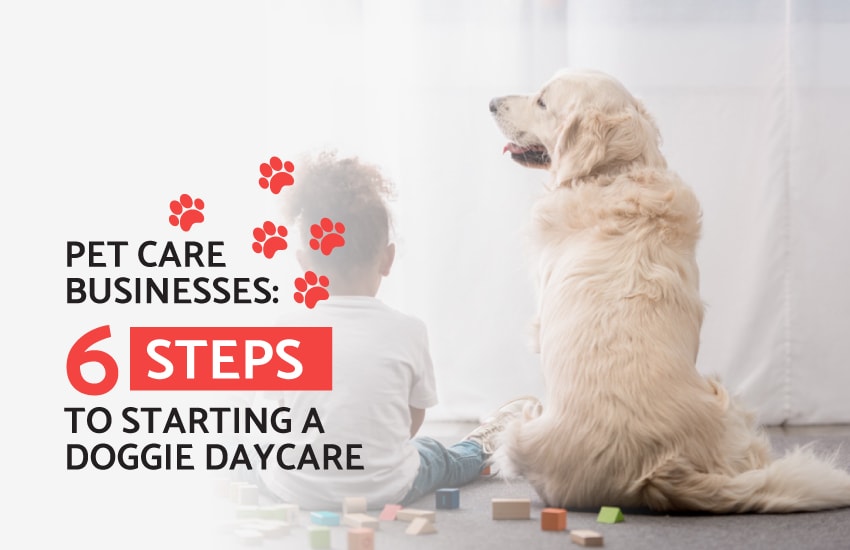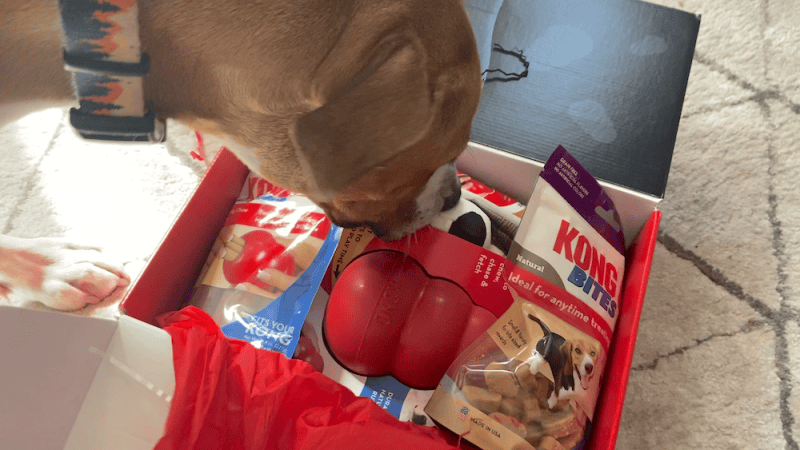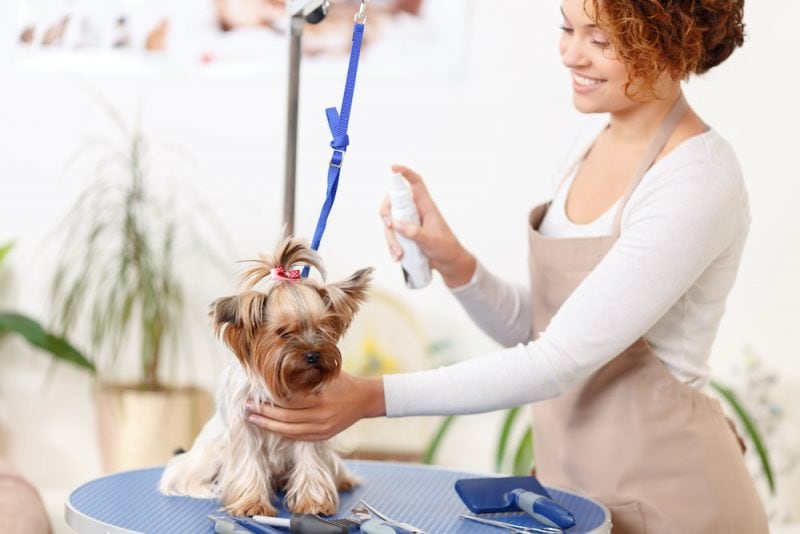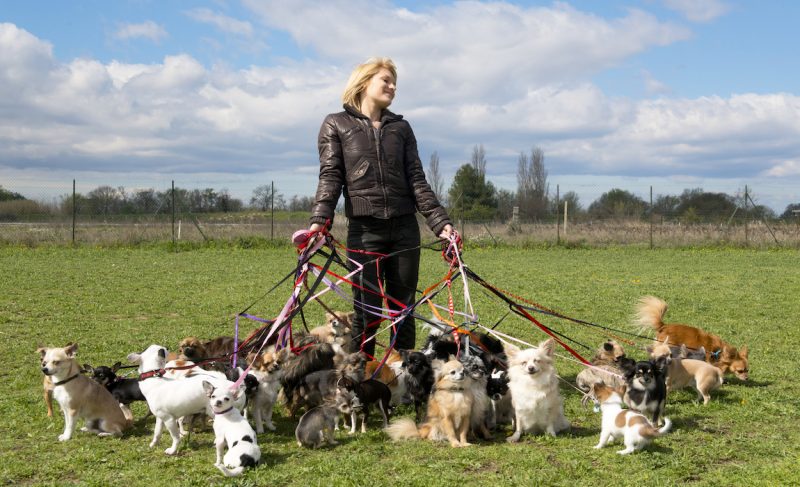Once you’ve decided to open a doggie daycare, you’ll probably want to be operational as soon as possible. The promise of new furry friends is hard to wait for!
However, there are quite a few steps between choosing to open a daycare and actually accepting reservations. From finding facilities and hiring staff to setting standards ensuring safe dog play, there are decisions to make.
At Gingr, we specialize in solutions to improve pet care business management. We’ve noticed a few common necessities when it comes to starting a dog daycare, and compiled them in the following steps:
- Understand the business model of a dog daycare.
- Secure your facilities.
- Hire qualified staff members.
- Price your services.
- Develop a system for animal evaluation.
- Mitigate risk for your business.
Are you ready to open your doggie daycare? Let’s get started.

1. Understand the business model of a dog daycare.
Before opening a dog daycare, you need to develop a clear understanding of what the model for this type of business entails.
Much different than other service industries, dog daycare businesses rely on repeat business— something you’ll have to account for in most aspects of your operations.
This can be generated by:
- Memberships. For particularly regular clients, like those that will be returning weekly, would benefit from memberships at either a discounted rate or with additional services and benefits thrown in.
- Punch cards. This refers to selling packages of services (ex: 12 stays at your dog daycare) to clients in bulk for a discounted price.
- Additional services. Whether grooming or training, additional services allow you to provide more value to customers and retain their business beyond an additional stay.
When starting your dog daycare, incorporate these facets into your planning. This could mean building out grooming facilities, hiring a certified dog trainer to your staff, or creating discounted bulk pricing.
As you navigate through the steps following this one, do so with repeat business in mind.

2. Secure your facilities.
Once you’ve truly evaluated your decision to open a dog daycare, you can begin to actually construct the business. If you’re going from the ground up, securing facilities comes first.
There are two main ways to secure physical facilities for your dog daycare:
- leasing a space
- building/buying a space
The first option is generally more accessible for businesses without huge startup funding available (buying/building facilities is incredibly expensive!).
However, leasing a space means you need to find a pet-friendly facility (or one you’re allowed to make changes to) and likely an insurance policy listing your landlord as an additional insured party.
When evaluating your facilities options, consider the following:
Location
Location can play a huge role in the facilities you choose. Often, location plays a huge role in the price and type of facility you’re able to secure.
While you may feel tempted to go after a prime storefront space, realize that industrial and mixed-use spaces can be just as successful as far as location is concerned.
Zoning Regulations
Explore zoning regulations in your locality to make sure you’re operating an area that you’re legally allowed to. There are often regulations around where businesses, and even more so businesses with animals, can be located.
Physical Premises
Explore the premises through the eyes of an animal. Is there space to explore like a fenced-in play yard? Is the flooring acceptable as far as disease-control and slip-resistance standards? Is there plumbing to support baths and deep facilities cleaning?

3. Hire qualified staff members.
For pet parents to leave their dogs in your care, they need to trust that you’re employing a competent staff of dog care experts. There are a few key characteristics you should look for in your internal hiring processes, as well as a few that will make you stand out to external customers considering your services.
When hiring staffers, look for the following characteristics:
- A love for dogs. This goes without saying— if someone is more of a cat person or has a terrible dog allergy, they’re not the right fit for your business.
- A variety of specialties. Consider hiring staff members across a variety of specialties, such as grooming and dog training. This will allow you to comfortably offer a wider array of services, rather than MacGuyver-ing solutions when the need arises.
- Basic training and certification. Dog daycare workers should have an understanding of canine CPR and other basic first aid necessities. Consider looking for official pet care certification, such as that provided through PACCC.
- Ability to adapt. Each day in petcare will look different. Hire staff members with an ability to adapt to changing conditions, such as the incorporation of new dog daycare management software or new responsibilities in the event of unexpected circumstances (such as the current COVID-19 pandemic sweeping the U.S.)
Mindful hiring from the start will prevent disastrous issues later on, so being particularly careful when choosing team members is a smart decision.

4. Price your services.
How you choose to price your services can have a huge impact on your operations overall. When pricing your services, keep the following in mind:
Mindful Pricing
While your business needs to be profitable (bringing in more revenue than your costs of operation), setting your pricing is more complicated than that basic fact.
Setting prices too high will be exclusionary to customers unwilling to pay such extravagant prices, while setting prices too low will make your services seem sub-par by association. Aim to set prices that reflect your services, so if you’re pricing things higher, make sure you’re truly providing that value to customers.
Further, remember that a simple pricing structure will always win out— neither you nor your customers benefit from a complicated pricing structure.
Accepting Deposits
The ability to accept deposits is especially important when it comes to scheduling for pet care businesses.
Consider incorporating deposits into your pricing structure (receiving a percentage of the payment in advance) to ensure that customers that make reservations follow through.
Recurring Payments
For daytime dog daycares, it’s common for owners to bring their pets to the facility on a regular basis. This could be every day of the week, a few days of the week on a regular schedule, or even once a week on the same day.
Consider offering a recurring payment structure to those customers, so they don’t have to remember to pay each and every time. For example, offering day packages (similar in concept to punch cards), allows pet owners to purchase multiple days of care with one transaction.
Tips to Staff
Accepting tips for dog daycare service is somewhat controversial in the industry, so it’s up to you to decide whether to encourage them or not.
On one hand, some pet care customers resent being asked to tip for the service— especially if they’re regular customers and paying a higher price range to begin with.
However, there can definitely be personal relationships forged between pet care workers and animals, and customers may want the opportunity to express their gratitude via tip. The same rule applies to tipping dog groomers too!
Consider your pricing overall and decide whether accepting tips would be a positive decision. For more information about pricing and profit, check out this guide to creating a dog daycare business plan.

5. Develop a system for dog evaluation.
Earlier we mentioned that customers need to trust your staff members in order to entrust their dogs to your care. However, there’s another aspect to that consideration— the other dogs at your facility.
While staff members can be instructed and managed, that can be a bit harder to do with animals, especially if they’re a bit unruly to begin with.
It’s important that you evaluate each animal that will be in your care to make sure that your staff members and the other animals in your facility will be safe around the newcomer. This is true across the board for any job that involves working with dogs – as well as other pets!
Here are a few tips when evaluating dog clients:
- Complete an initial evaluation. Just as a customer needs to trust your staff prior to booking, you need to trust their pet. Create an initial evaluation that’s standard across all animals that come into your care, and avoid accepting any animals that fail this initial check.
- Make sure your staff members recognize the signs of dog aggression. When your staff members feel comfortable recognizing the early signs of distress in dogs in your care, they can respond and record the interaction accordingly.
- Maintain an ongoing conversation. Evaluation should be an ongoing process, as there’s always the chance a dog’s temperament can change. If you’re working with pet care software, staffers can easily leave notes and notifications for other staff members to see before interacting with a dog.
The safety of your staff members and clients is a crucial consideration for any dog daycare business. Putting thought into the evaluation process early on will help prevent mishaps going forward.

6. Mitigate risk for your business.
Finally, just as with any other business venture, early understanding and mitigation of potential risk is crucial. In fact, because you’re going to be working with live, and at times, unpredictable animals, this is especially important!
There are a few different factors that play into this:
Insurance
Insurance is what will protect your pet care business in the event of the worst-case scenario— whether it’s covering legal fees, funding essential repairs, or even covering lost revenue.
While you’ll want to invest in common business insurance options, such as commercial and professional liability and property coverage, there are also pet business-specific coverage types.
This includes animal bailee insurance and even lost key coverage.
Software
Technology is taking a variety of industries by storm, from nonprofits tracking time to events heading to the digital sphere. In the pet care industry, there are many dog training and daycare software solutions to help your dog daycare mitigate risk as well.
With reservations, scheduling, and payments online, your business will have a clear picture of what’s to be expected at every point of your operations. This oversight ensures you’re never over-booked to the point of danger.
Further, many of these solutions allow for easy communication of alerts and notes. That means each staff member is aware of a dog’s history in your care. Any behavior conflicts will be quickly communicated.
Disaster Preparations
In the wake of the COVID-19 pandemic currently sweeping the U.S., businesses large and small are noticing how essential proactive thinking is.
Consider how your business could be affected by this or similar conflicts, and aim to create a plan of action for when these issues strike.
Do you know how you’d care for animals in longer-term (perhaps a week) boarding care? Do you have pet food available? Have you considered how your staff will be cared for and compensated? Aim to have answers to these questions before you actually need them.
Opening a dog daycare is a worthwhile effort, but there are a few steps to take before you welcome your first furry guest. Use this guide to kickstart your preparations and you’ll be off to a great start!
About the Author: Andy Gale is the Director of Sales and Marketing at Gingr, a leading software provider for pet boarding and dog daycare companies. Gake helps pet care business owners understand the value of intuitive software in daily management, as well as partners with other pet care industry leaders to support business owners in the field.













Leave a Comment